What Does Durian Fruit Taste Like? A Strange Adventure For Your Tastebuds
Durian fruit, known for its polarizing reputation, stands as one of the most controversial delicacies in the culinary world.
Travelers and food enthusiasts often encounter this spiky, intimidating tropical treasure with a mixture of curiosity and apprehension.
Its powerful aroma and unique appearance have earned durian both passionate fans and equally passionate critics across Southeast Asia.
Some people describe the fruit as a sensory adventure that challenges traditional taste expectations.
Cultural perceptions surrounding durian range from absolute adoration to complete rejection, making it far more than just another tropical fruit.
Debates about its flavor profile can spark intense conversations among food lovers and travelers.
Your journey into understanding this extraordinary fruit promises to be an intriguing exploration of taste, culture, and culinary adventure.
Understanding Durian Fruit
Durian is Southeast Asia's fruit monarch, sporting a massive size with sharp green-brown skin.
Ripeness brings an intense smell that shifts between different durian types.
Many find this scent so powerful that some locations ban the fruit from public spaces and transit systems.
Mature durians typically split open, which helps expose their soft inner meat and release its signature smell.
Creamy flesh comes in white, yellow, or red colors and offers a pudding-like feel with distinctive taste.
Eaters can enjoy this fruit raw or prepared using large cutting tools.
High prices stem from short growing seasons, quick spoilage, and increasing consumer interest worldwide.
Durian Fruit Flavor Profile
Durian is a unique fruit that defies simple description.
Anthony Bourdain noted its taste goes beyond typical flavor comparisons.
Locals might enjoy the flesh directly from the fruit, but many cooking methods exist.
Southeast Asian kitchens frequently include this special ingredient.
Some cultures believe durian carries romantic powers.
Durian's scent immediately catches attention.
Sharp notes resemble vinegar with strong bitter undertones.
Flavor profiles run deeper than initial impressions suggest.
Reactions vary widely among different eaters.
Some individuals find the smell overwhelming, while others celebrate its distinct character.
Seeds offer another option for those hesitant about direct consumption.
Regional Variations in Durian Flavor
Durian’s flavor can change a lot depending on where it’s grown, making each region’s fruit unique and interesting to try:
Trying durian from different regions is a fun way to explore the many faces of this tropical fruit, from sweet and mellow to bold and intense.
How To Choose A Ripe Durian Fruit
Choosing ripe durian can make all the difference for a sweet, creamy taste:
These tips can help you pick a durian that’s just right for eating and full of flavor.
Cutting Open a Durian Fruit
Protect hands with gloves when handling durian fruit to shield against sharp thorns and intense smell.
Select a sharp knife and cut through the stem at the top of the fruit.
Place the fruit upside down on a clean surface, with stem facing downward.
Slice carefully through the thick outer skin at the top of the durian.
Gently pull back the skin to reveal the inside.
Open the fruit carefully, watching out for potential pokes from sharp edges.
Once opened, extract the large pods and remove any stones or seeds from the soft flesh before preparing for eating or cooking.
Use ripe durian slices to create delectable sweet treats that everyone can enjoy together.
Is Durian Safe to Eat?
Durian fruits come with multiple health concerns despite its nutritional advantages when consumed incorrectly or in large amounts.
Medical experts recommend avoiding alcohol when eating this fruit to prevent unpleasant side effects.
Consumers must select fresh produce without any damage or spoilage signs to minimize potential health risks.
How to Use and Keep Durian Fruit
Soft durians feel like smooth cheesecake and tastes like sweet vanilla or caramel.
Consumers can enjoy its flesh raw or cooked, with sugar being the most classic addition.
Wrapping durian in a pancake creates another delicious option.
Frying with sugar makes for a tasty treat.
Sharing with friends helps make the experience more enjoyable.
Mixing durian with banana and creating a wine drink works well too.
Chilling durians works best because of their sweet nature.
Freezing provides another storage method.
Storing durians requires an airtight container to prevent strong smells from spreading through refrigerators.
Raw consumption remains the local favorite, though multiple eating methods exist.
Sugar enhances the natural flavor, making the fruit more appealing to different palates.
Durian in Popular Asian Desserts and Snacks
Durian’s bold flavor and creamy texture make it a favorite ingredient in many Asian desserts and snacks.
From creamy desserts to crispy snacks, durian adds a bold twist to many popular sweets across Asia.
Durian vs. Jackfruit Comparison
Jackfruit towers over other fruits in size, dwarfing even the durian.
Measuring up to three feet long, jackfruit can weigh an impressive 110 pounds, while durian maxes out at 30 pounds.
Durian flesh comes in multiple colors, including buttery yellow, pink, red, and white.
Jackfruit flesh appears paler yellow, closely matching banana coloration.
Jackfruit offers a unique sweetness blending apple, banana, mango, and pineapple flavors.
Some say its ripe taste closely resembles Juicy Fruit gum.
Thousands of small yellow blossoms create jackfruit's stringy, rubbery texture similar to mango or pineapple.
Ripe jackfruit becomes gummy, while durian remains smoother and creamier with a custard-like consistency.
Surrounding fruit pods maintain a crisp exterior.
Durian's smell is so powerful that many Asian transportation systems ban it completely.
Some locations strictly prohibit public durian consumption.
Individuals often prepare or eat durian outside to prevent indoor odor lingering.
Jackfruit's smell, while milder, occasionally faces similar public restrictions.
Durian provides significant health benefits through insoluble fiber that aids digestion and helps regulate insulin release.
Its potassium content supports blood pressure and heart rate management.
Containing tryptophan, durian serves as a mild sleep aid, headache remedy, and nervous energy balancer.
Both durian flesh and jackfruit seeds work as natural laxatives.

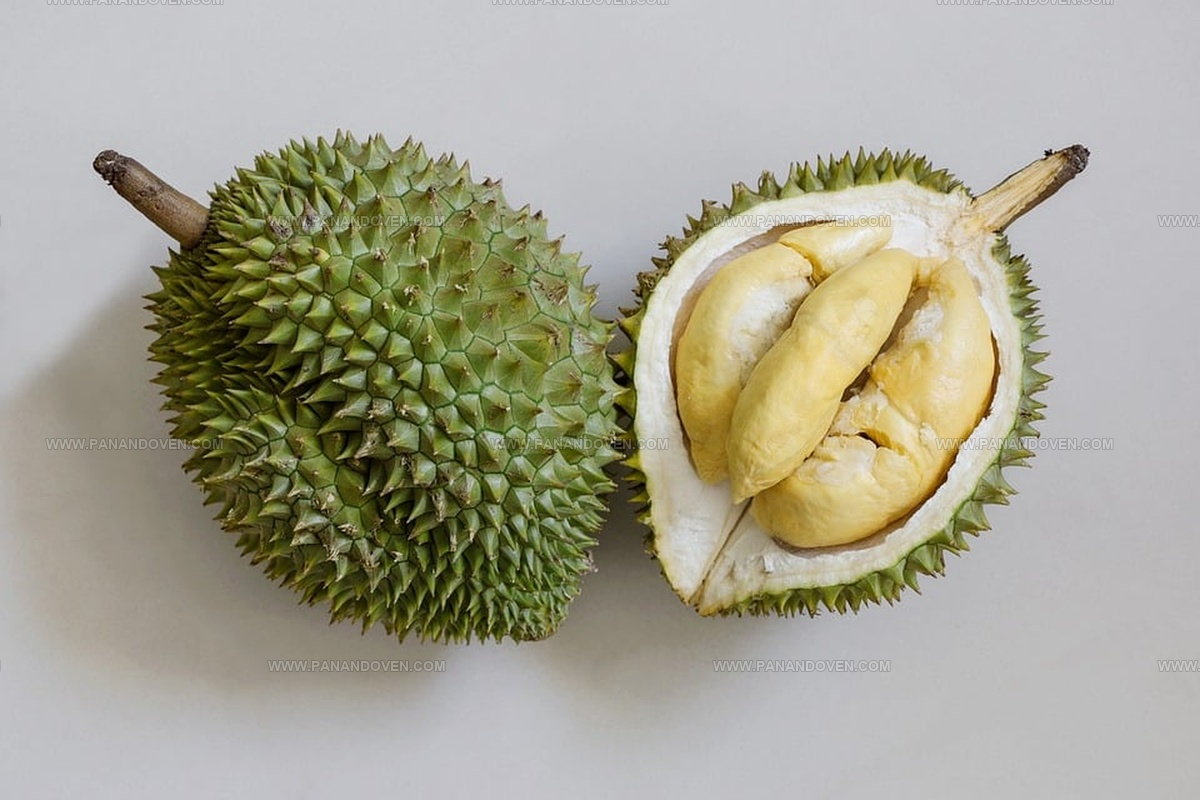
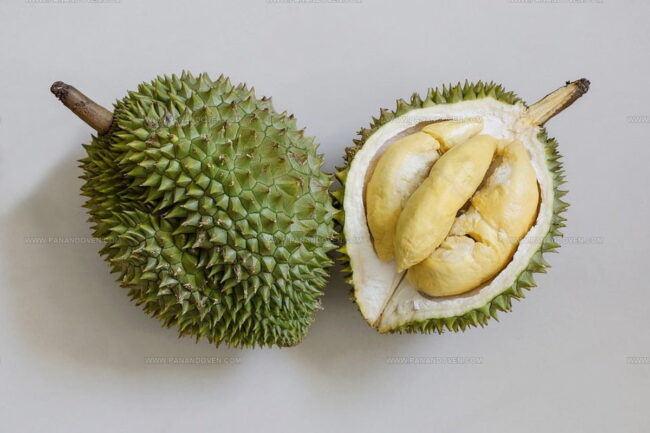
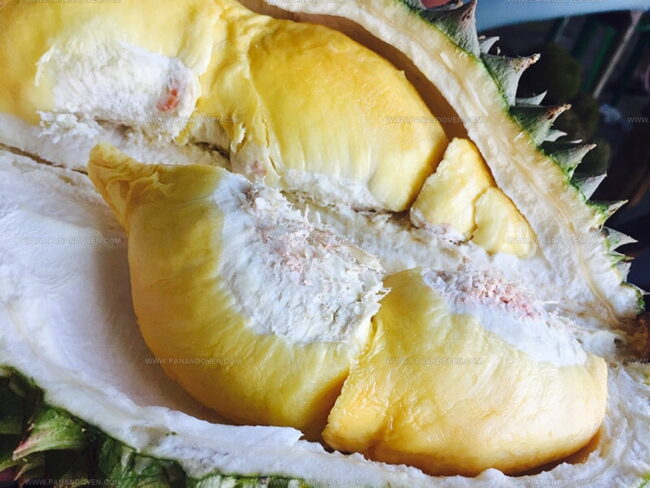
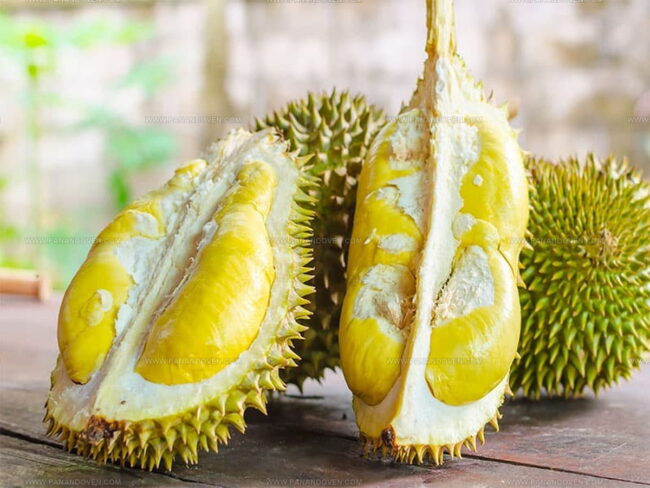
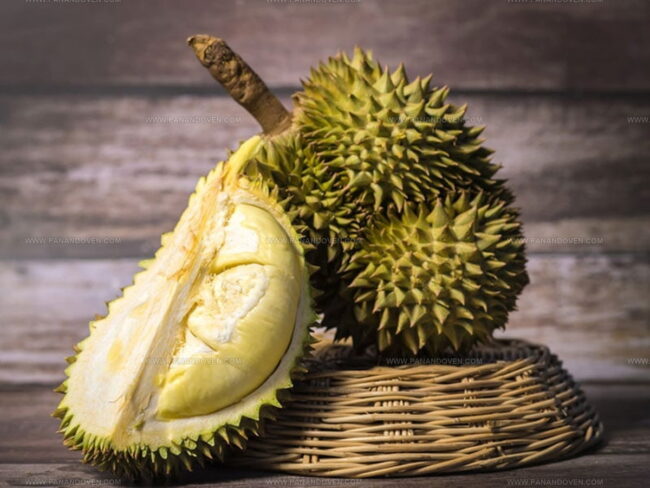
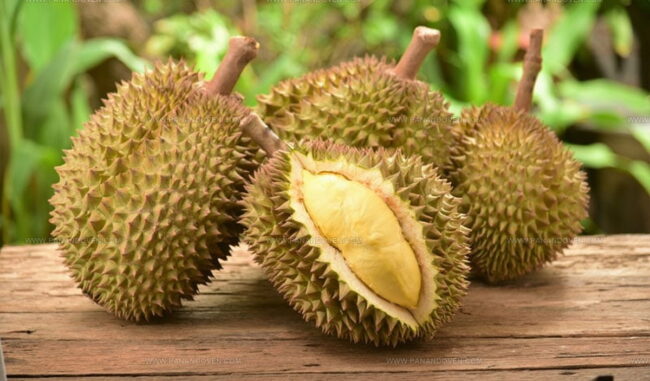
Marcus Reed
Founder & Food Content Creator
Expertise
Single-recipe development, Seasonal and local ingredient utilization, Food photography and styling, Culinary writing and content creation
Education
Culinary Arts Certificate, Blue Ridge Community and Technical College, WV
Focus: Fundamentals of culinary techniques, emphasizing hands-on experience in small-scale kitchen settings.
Marcus’s story begins in Asheville, where good food and family kitchens shaped his earliest memories. After hands-on culinary training and a lot of trial (and a little error), he realized that real cooking isn’t about perfection, it’s about connection.
At Pan and Oven, Marcus crafts recipes that are easy to follow, packed with flavor, and built for real kitchens.